Action Alert (39)
Stripes and spots: A tale of two Southern Appalachian skunks
Written by Matt Dhillon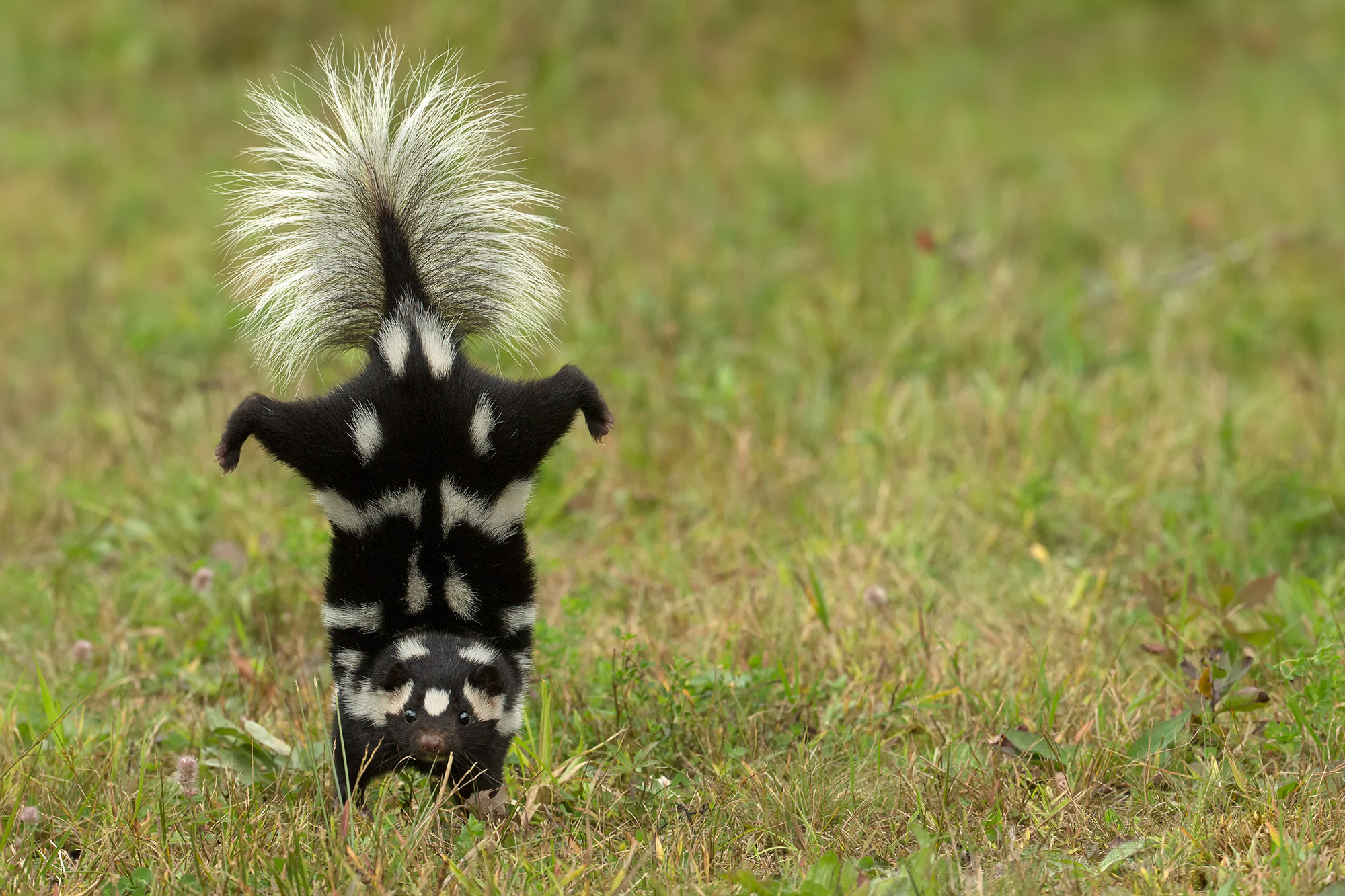 An eastern spotted skunk is seen in its signature defensive handstand. If the stance doesn’t deter predators it will let loose a caustic and malodorous spray akin to mace. Agnieszka Bacal via Virginia Department of Wildlife Resources
An eastern spotted skunk is seen in its signature defensive handstand. If the stance doesn’t deter predators it will let loose a caustic and malodorous spray akin to mace. Agnieszka Bacal via Virginia Department of Wildlife Resources
Striped skunks thrive as spotted cousins decline
This story was originally published by The Appalachian Voice.
BOONE — A characteristic white stripe on a black pelt is an instant warning to tread gently.
Nature’s stink bomb, the striped skunk (Mephitis mephitis) carries this distinctive mark on its back. But Appalachia has a second variety of this master of malodor, marked instead by a blotchy pattern of black and white fur.
The eastern spotted skunk (Spilogale putorius), was not always as rare as it is today. Decades ago, it was relatively common for trappers to catch the polecat, as it’s also known, for its pelt. But spotted skunk populations crashed between 1940 and 1970, according to a landmark paper from the University of Missouri looking at harvest data from trappers. By the 1980s, the study found, harvest numbers had plummeted by 99 percent, reflecting a steep decline in the skunk’s population.
Meanwhile, the spotted skunk’s striped cousin has thrived throughout the United States. So why have their populations diverged so drastically?
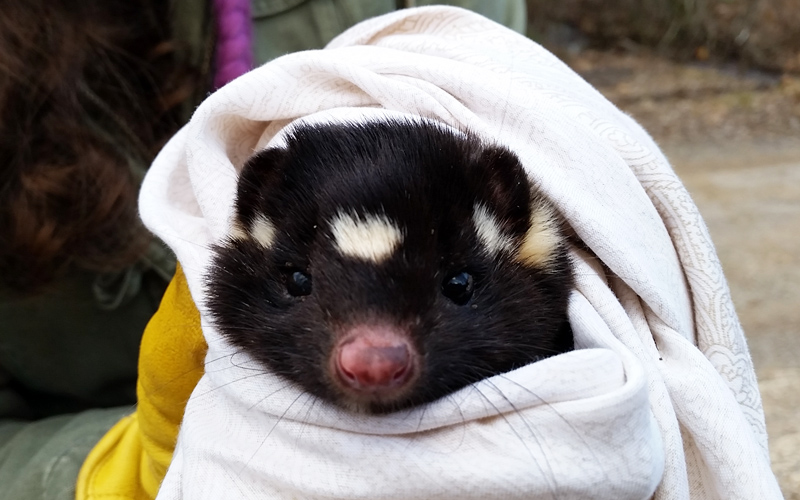 A spotted skunk trapped as part of Emily Thorne’s Virginia Tech study of the animals. Emily Thorne
A spotted skunk trapped as part of Emily Thorne’s Virginia Tech study of the animals. Emily Thorne
Learn about TVA’s switch from coal to natural gas at June 12 teach-in

Want to help wildlife? TWRA to host huge habitat-improvement event

RESCHEDULED: Mudchasers wanted: Sign up to track pollution and sediment pumps

KNOXVILLE — Join Chris Irwin and others to learn how to help track the origin of sediments and other pollutants in area waterways.
The meeting was postponed by snow and is now set for 7 p.m. Jan. 24 at Barleys, 200 East Jackson Ave., Knoxville.
“Spring is coming and with it rain and mud into the creeks and streams around Knoxville. We think a handful of people working together can stop a lot of mud going into the Tennessee River.
Dec. 10, 2023 — Universal Declaration of Human Rights’ 75th anniversary
EarthSolidarity!™ is a grassroots appeal by the Foundation for Global Sustainability. It challenges everyone to become active, or even more engaged, in humanity’s exigency to stem the demise of our planet’s life-support systems. The gist of it is summarized in two sentences:
Ask not what Mother Earth can do for you.
Ask what you and those next to you can do to keep our planet inhabitable.
That meme addresses the global polycrisis — with a hat tip to President John F. Kennedy for borrowing the notion from his 1961 inauguration speech. (Then the Cold War was approaching the boiling point of the Cuban missile crisis. And incidentally, human rights had improved little yet for the majority of the world’s population.)
The global polycrisis is brought about by the pernicious entanglement of many systems that keep civilization ticking. Relatively small disturbances in one system may reverberate through other systems. When necessary corrections trigger a self re-enforcing feed-back loop, previously unimagined break downs that affect multiple systems can happen. Recent examples are the disruptions of world supply chains by the COVID-19 pandemic; then again by a single ship stranded in the Suez Canal.
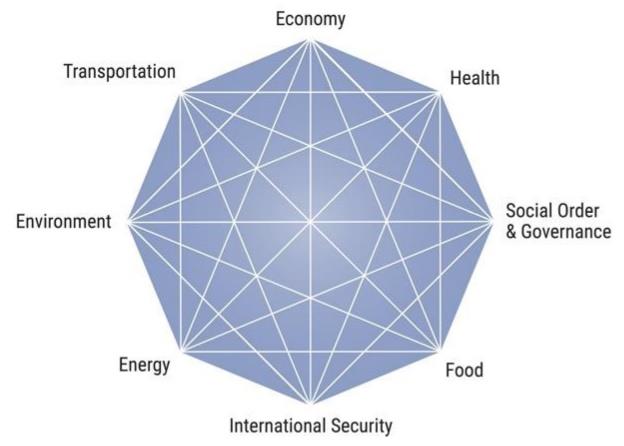 Inter-system categories. From: ‘What is a Global Polycrisis?’ by the Cascade Institute
Inter-system categories. From: ‘What is a Global Polycrisis?’ by the Cascade Institute
Increases in the frequency and severity of calamities, such as catastrophic floods, hurricanes and tornados, extensive droughts, debilitating heat waves, widespread forest fires, or episodes of abominable air quality often result in disruptions of supply chains, diminished availability of critical services, reduced job security and hikes in cost of living expenses. In less developed areas of the world, water or food shortages may lead to armed conflicts and waves of refugees.
 An example of how climate impacts combine with other shocks to increase cost of living. The baseline shows an average cost without the impact of climate change against two scenarios going forward — current policies and adaptation & mitigation — to indicate the increase in cost of living over time as climate impacts accumulate. As the cost of living increases, the colored dashed lines show the potential for societal tipping points or volatile transitions, from strikes to political instability. (Behrens, P., 2023)
An example of how climate impacts combine with other shocks to increase cost of living. The baseline shows an average cost without the impact of climate change against two scenarios going forward — current policies and adaptation & mitigation — to indicate the increase in cost of living over time as climate impacts accumulate. As the cost of living increases, the colored dashed lines show the potential for societal tipping points or volatile transitions, from strikes to political instability. (Behrens, P., 2023)
‘Save Money, Save Energy’ Expo — at Ijams this Sunday
 Explore how to reduce your monthly power bill and increase the health and comfort of your home.
Explore how to reduce your monthly power bill and increase the health and comfort of your home.
Federal and local funding opportunities available at all income levels
KNOXVILLE — As the weather turns colder, many Knoxvillians start to worry about home heating bills. Fortunately, energy efficiency incentives and funding programs are available to Knoxvillians of all income levels through federal tax credits and rebates. Free local funding is available for qualifying customers of KUB through the “Home Uplift” program. Many Knoxvillians are unaware of these opportunities or unsure of how to access the funding programs.
Family-friendly Home Energy Expo
The local organizations that cooperate with small local businesses in the Save Money, Save Energy program and the expo and workshop at Ijams are the Southern Alliance for Clean Energy (SACE), Knoxville Utilities Board (KUB), Socially Equal Energy Efficient Development (SEEED), Sierra Club – Harvey Broome Group, Three3 (pronounced three cube) and Tennessee Interfaith Power and Light (TIPL).
Home Energy Expo at Ijams Nature Center, 2915 Island Home Ave, Knoxville, TN 37920 — Sunday, Nov. 5, 2023 from 1 p.m. to 4 p.m.
Save Money, Save Energy workshop starts at 2:30 p.m. (RSVP recommended to secure a seat)
Keep the Tennessee River Beautiful receives State Recycling Award for Cigarette Litter Prevention Program with Dollywood
Written by Kathleen Gibi The Tennessee Recycling Coalition presented its ‘2023 Nonprofit Recycler of the Year Award’ to Keep the Tennessee River Beautiful at their annual conference held in Gatlinburg, Tenn. in August. LEFT TO RIGHT: Amber Greene, Executive Director of the Tennessee Recycling Coalition; Edmond McDavis, Executive Director for the Tennessee Delta Alliance (who worked on the project when he was with Keep Tennessee Beautiful); Kathleen Gibi, Executive Director of Keep the Tennessee River Beautiful; Monica Kizer, Communications Director at Keep Tennessee Beautiful, and Lincoln Young, President of the Tennessee Recycling Coalition.
The Tennessee Recycling Coalition presented its ‘2023 Nonprofit Recycler of the Year Award’ to Keep the Tennessee River Beautiful at their annual conference held in Gatlinburg, Tenn. in August. LEFT TO RIGHT: Amber Greene, Executive Director of the Tennessee Recycling Coalition; Edmond McDavis, Executive Director for the Tennessee Delta Alliance (who worked on the project when he was with Keep Tennessee Beautiful); Kathleen Gibi, Executive Director of Keep the Tennessee River Beautiful; Monica Kizer, Communications Director at Keep Tennessee Beautiful, and Lincoln Young, President of the Tennessee Recycling Coalition.
Keep the Tennessee River Beautiful (KTNRB) was just named 2023 Nonprofit Recycler of the Year
Since the project launched at Dollywood in 2021, the program has led to the plastic getting recycled from approximately 350,000 cigarette butts. The project also made Dollywood the first theme park in the world to recycle the plastic from every cigarette butt collected in guest-facing receptacles on its property.
“We’re so proud of this honor, more than anything because of the commitment from Dollywood and the other supporting partners who worked to ensure that this trailblazing collaboration would protect the Tennessee River watershed from the harmful effects cigarette litter,” said Kathleen Gibi, KTNRB Executive Director.
“Taking the effort to the next step of recycling the plastic from otherwise discarded cigarette waste makes it all the more impactful and is yet the latest example of Dollywood’s reputation of working toward the greater good.”KTNRB was able to provide Dollywood with 26 art-wrapped cigarette receptacles through a collaboration of grants and sponsorships from Keep America Beautiful, Keep Tennessee Beautiful, the Tennessee Valley Authority (TVA), and the American Eagle Foundation.
Join a community of Tennesseans carving out gardens to attract, feed and nurture pollinating wildlife
 These signs will show your friends and neighbors that your wildflower garden supports pollinators and hopefully get them excited about starting a pollinator garden too! Our original signs are made from embossed, recycled aluminum and measure 8 x 12 inches. They are available for a donation of $25 each and can be shipped directly to you. Tennessee Environmental Council
These signs will show your friends and neighbors that your wildflower garden supports pollinators and hopefully get them excited about starting a pollinator garden too! Our original signs are made from embossed, recycled aluminum and measure 8 x 12 inches. They are available for a donation of $25 each and can be shipped directly to you. Tennessee Environmental Council
Through Generate Some Buzz, the Tennessee Environmental Council aims to engage hundreds of Tennesseans in establishing new pollinator habitats statewide. All gardens, both big and small are welcome and by participating in this program, you are joining a vibrant community of Tennesseans committed to protecting our pollinators, one plot at a time.
Populations of many pollinator species like bees, butterflies, moths, beetles and hummingbirds have been negatively impacted by agricultural practices such as using synthetic pesticides, disease and habitat loss. These creatures are experiencing a drastically different world compared to just a few decades ago.
Native pollinators depend on native plants to provide habitat and food, and plants need pollinators to help them reproduce. In fact, pollinators assist in the reproduction of 75 percent of flowering plants worldwide. Turning manicured lawns that provide little to nothing for pollinators into havens full of native flowers and wild grasses, we will effectively "Generate Some Buzz" and bring back these essential workers full force.

Join SACE for a Clean Energy Generation webinar on Wed, Oct. 25 at 1:30 PM

The Southern Alliance for Clean Energy invites people to join the “Clean Energy Generation.”
We’re gaining momentum as a movement that is rising to one of the greatest challenges of our time: the climate crisis. We’re pushing for new policies and practices and taking action, no matter how small — because it takes small ripples from people at all levels of engagement to create a tsunami of change.
At the second Clean Energy Generation webinar, SACE staff, including Executive Director, Dr. Stephen A. Smith, Climate Advocacy Director Chris Carnevale, and Climate Advocacy Coordinator Cary Ritzler, will talk about what the “Clean Energy Generation” is and how you can play a role, no matter your age, abilities, income or zip code.
SACE’s Executive Director will also share the ways he is taking clean energy action in his home, and how you don’t have to be an expert to connect with your community and make meaningful change: learning more is a good place to start. We’ll also show how small groups of neighbors, students and friends are coming together to accomplish specific climate-actions goals. And we’ll have time on the webinar to answer your questions.
Can’t make it? Register anyway and we’ll send you the recording plus a few follow-up resources.
The Clean Energy Generation is motivated by what our daily lives, communities, country, and planet will look like when clean energy replaces decades of dirty pollution from fossil fuels. We are working together for communities powered by clean energy with good jobs, clean air and water, clean transportation, a stable climate and affordable bills, where all of us can thrive.
Dogwood Arts sets out to keep Knoxville blooming — one yard at a time
Written by Hellbender Press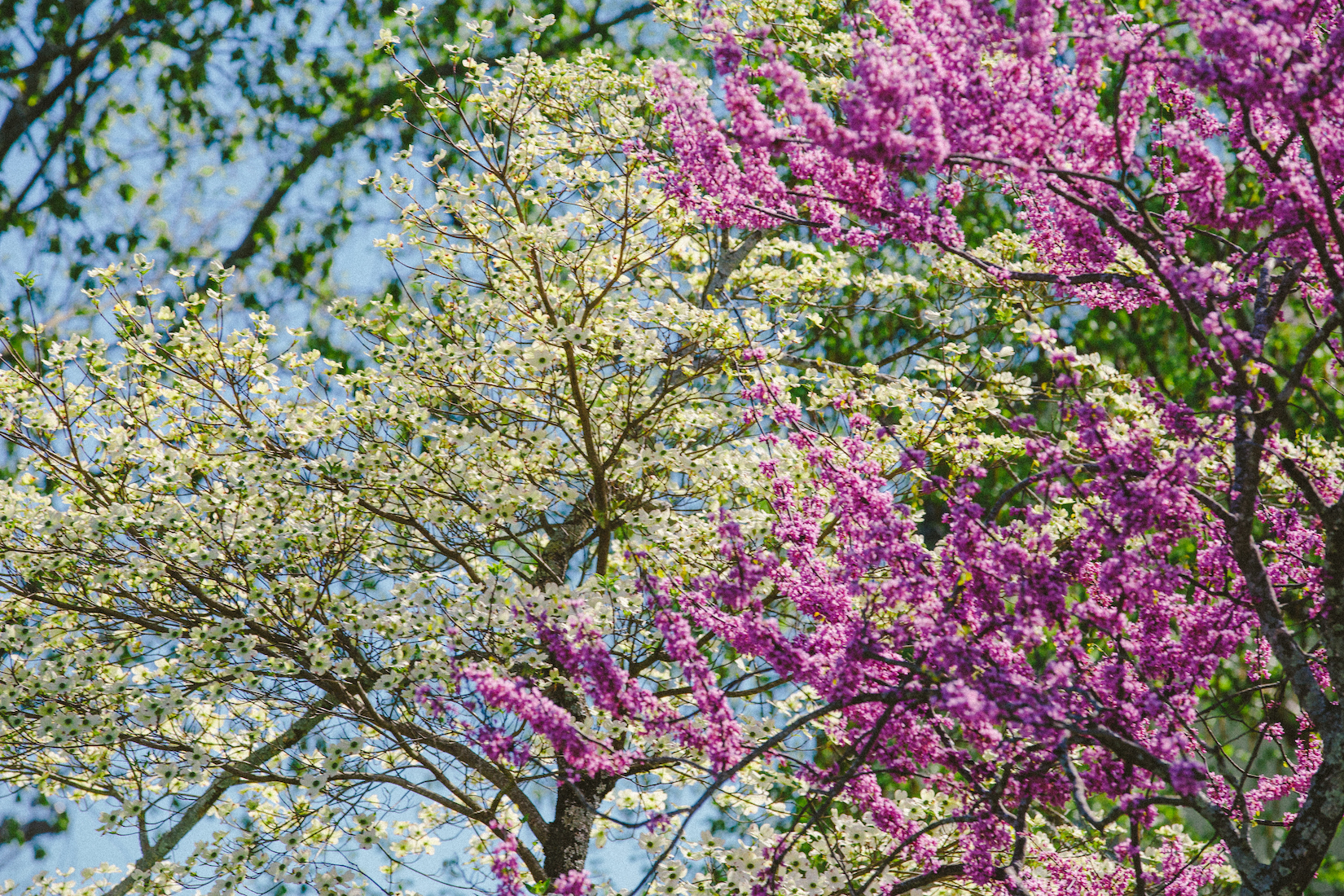
Annual Bazillion Blooms campaign focused on planting a Dogwood in every yard across East Tennessee
It’s planting time in Tennessee! Dogwood Arts is on a mission to Keep Knoxville Blooming by selling dogwood trees through their annual Bazillion Blooms program. Bare-root trees (2-4ft tall) are on sale now for $25 each (or $20 each when five or more are purchased). The trees are disease-resistant, April-blooming, and available in either white or pink flowering varieties. Orders can be placed year-round, but trees are distributed in the fall to coincide with optimal planting time for successful growing.
Trees ordered through Nov 16 will be available for pick-up at the Dogwood Arts office (123 W Jackson Avenue) on Friday, Dec. 8 from 10AM-4PM and Saturday, Dec 9 from 9AM-12PM. Tree orders can be placed online at https://www.dogwoodarts.com/bazillionblooms or by calling Dogwood Arts at (865) 637-4561. Since 2009, over 14,500 dogwood trees have been added to East Tennessee’s landscape through the Bazillion Blooms program.
 Oct. 24 - 31, everybody is encouraged to learn about bats and get involved in their conservation. National Park Service
Oct. 24 - 31, everybody is encouraged to learn about bats and get involved in their conservation. National Park Service
An excellent time to celebrate bats
ASHEVILLE — Last year, the public was invited to “Bats N Brews” in honor of Bat Week at Sierra Nevada Brewing Company. This year we have not heard yet of any event to celebrate bat week in the southern Appalachians. Who will step up this year? Please let us know of any related activities. Or at least celebrate with family and friends. This article includes great recipes, too.
Bat Week is an international, annual celebration designed to raise awareness about the need for bat conservation. Bats are vital to the health of our natural world and economy. Although we may not always see them, bats are hard at work all around the world each night — eating tons of insects, pollinating flowers, and spreading seeds that grow new plants and trees.
Rangers pry bear cub from pet food container
Written by Matthew Cameron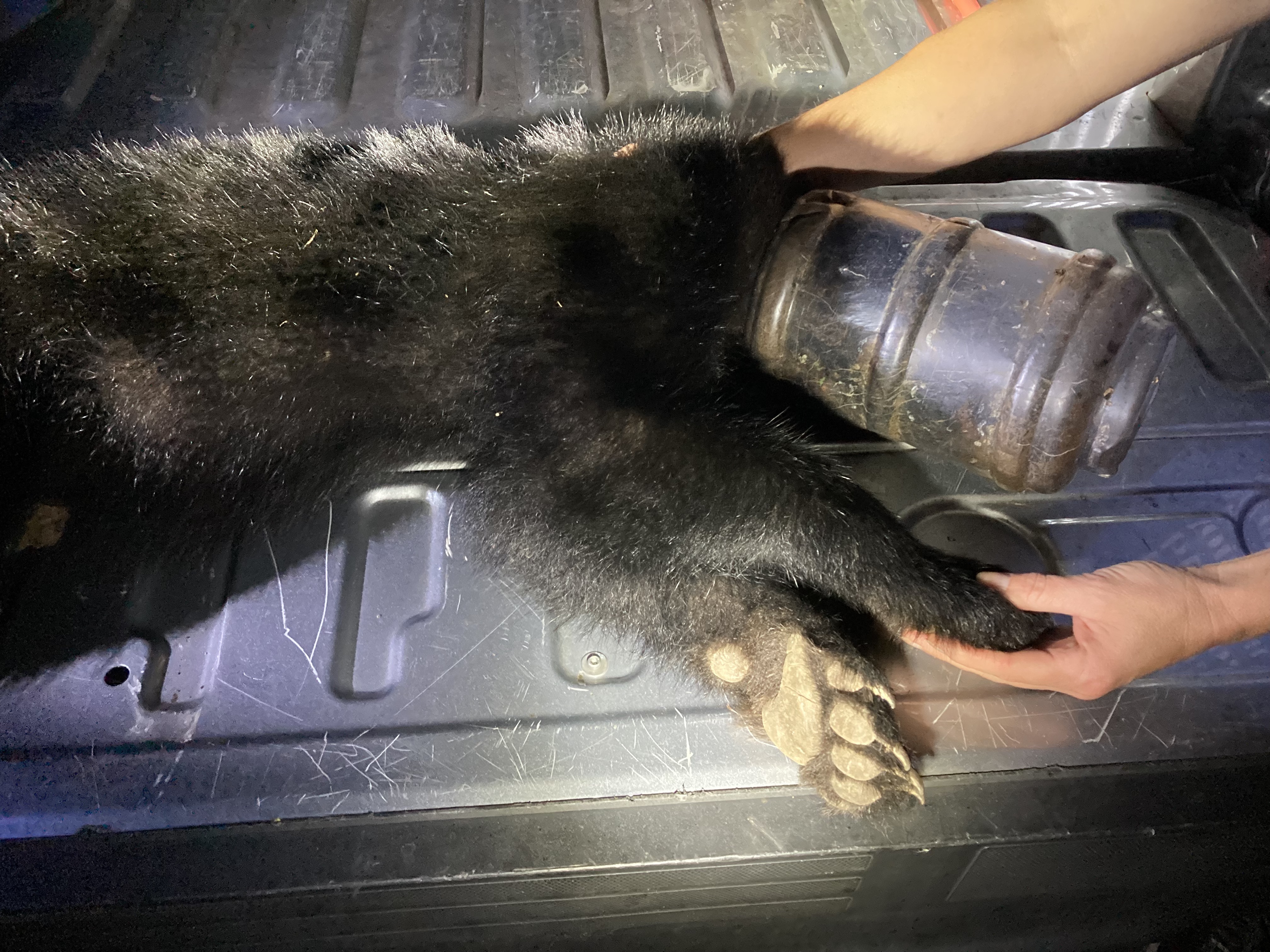 TWRA is stressing the importance of being BearWise after removing a plastic pet feeder from a bear cub’s head this week in Blount County. Tennessee Wildlife Resources Agency
TWRA is stressing the importance of being BearWise after removing a plastic pet feeder from a bear cub’s head this week in Blount County. Tennessee Wildlife Resources Agency
Wildlife agency advises people to be bear aware
Matthew Cameron is a wildlife information specialist at Tennessee Wildlife Resources Agency.
MARYVILLE — Tennessee Wildlife Resources Agency is stressing the importance of being BearWise after recently removing a plastic pet feeder from a bear cub’s head. TWRA Black Bear Support Biologist Janelle Musser responded and promptly began a trapping effort. She was able to lure the cub into a trap, but was unable to trigger it with its mouth due to the container on its head. She moved the trap each time a new sighting was reported, even trying different style traps but the mother became trap shy and difficult to pattern.
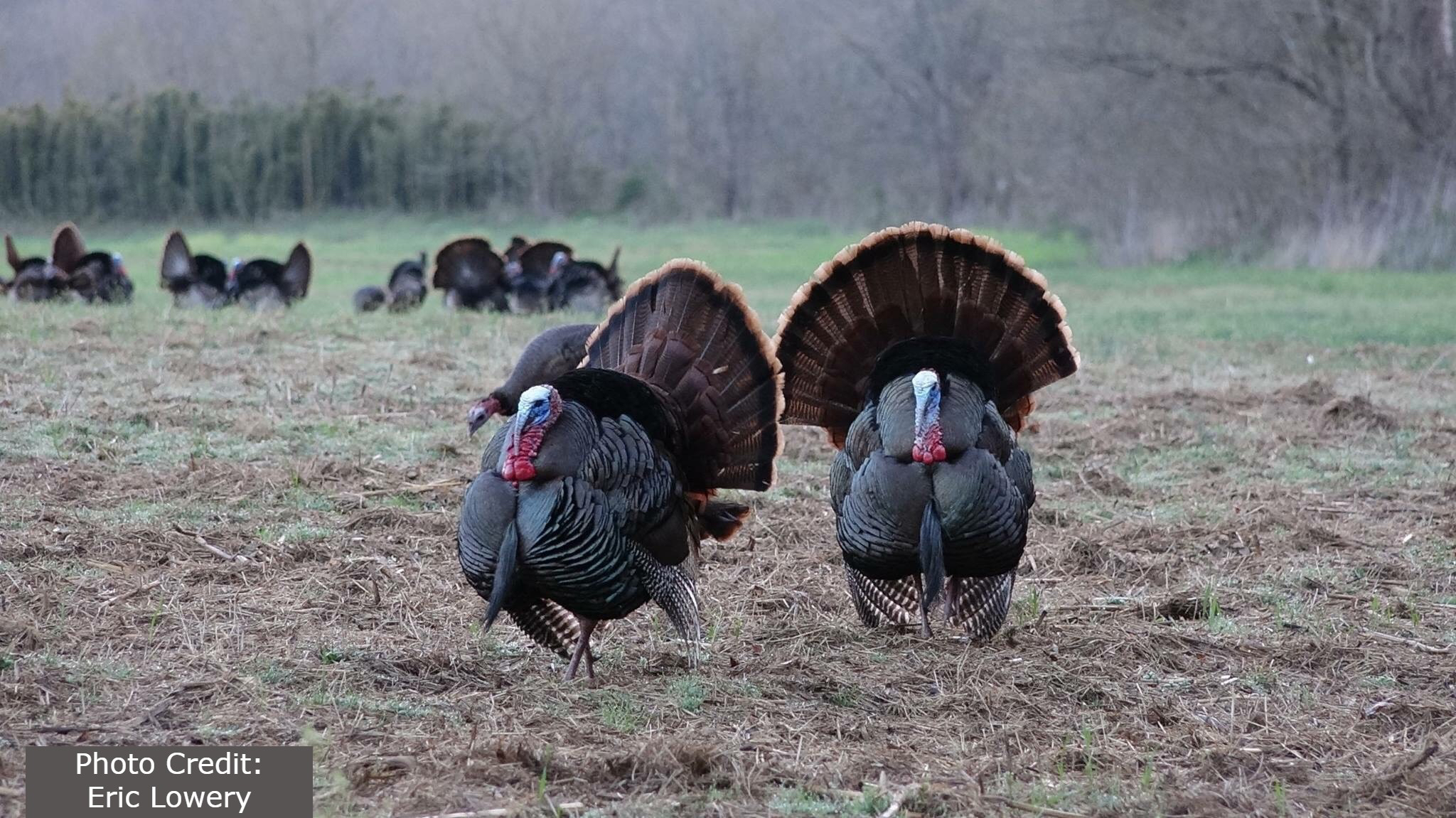 American wild turkey populations have recovered from historic lows. TWRA still needs help managing the modern populations. Courtesy Eric Lowery via Tennessee Wildlife Resources Agency
American wild turkey populations have recovered from historic lows. TWRA still needs help managing the modern populations. Courtesy Eric Lowery via Tennessee Wildlife Resources Agency
TWRA wants you to help build research on USA’s second bird
NASHVILLE — Benjamin Franklin only joked (we think) about making the wild turkey the national bird, but this summer you can help Tennessee with research on the turkey’s national history and renaissance.
Turkeys and bald eagles both grace the state and Southeast and have a notably parallel history of climbing from dire straits nationwide.
The bald eagle became the national symbol on the U.S. seal in 1782.
Declaration of Independence signer Franklin said he would have preferred a different bird. While he may have been joking, he never lobbied for it publicly. His comments in a letter to his daughter, Sarah, have become infamous.
“For my own part I wish the bald eagle had not been chosen as the representative of our country. He is a bird of bad moral character. He does not get his living honestly. You may have seen him perched on some dead tree, where, too lazy to fish for himself, he watches the labour of the fishing hawk; and when that diligent bird has at length taken a fish, and is bearing it to his nest for the support of his mate and young ones, the bald eagle pursues him, and takes it from him … the turkey is in comparison a much more respectable bird, and withal a true original native of America.”
- twra
- twra turkey
- wild turkeys in tennessee
- wild turkeys rebound
- wild turkey survey
- wild turkey rebound
- wild turkey ben franklin
- ben franklin
- bald eagle
- national bird of us
- tennesse wildlife resources agency
- national bird
- wild turkey population
- bald eagle population
- bald eagle history
- wild turkey history
- stephen bales
- thomas fraser
- ben pounds
Help protect an Oak Ridge graveyard dedicated to the study of life
OAK RIDGE — Tennessee Citizens for Wilderness Planning will for the second year host a group of volunteers from Transformation Church on July 15 at the Worthington Cemetery Ecological Study Area to remove Dahurian buckthorn and other invasive species. This is the second year of help at the site from church members, and is one of several service projects church members will conduct throughout the Knoxville area. Volunteers will also help pick up litter and do some trail work.
Additional volunteers are needed to work with the Transformation Church group. We’ll meet at Elza Gate Park in Oak Ridge at 10 a.m. and plan to work until 2 p.m.; a pizza lunch will be provided. Bring bug spray and loppers and/or clippers, and wear sturdy shoes and clothing. Minors will need a parent’s/guardian’s signature on a waiver form (to be provided) in order to participate. For additional information, contact Jimmy Groton at This email address is being protected from spambots. You need JavaScript enabled to view it..
— Tennessee Citizens for Wilderness Planning
Tennessee Aquarium wants to up the pollination game
Written by Casey Phillips Pollinator Pathway signs on the Tennessee Aquarium Plaza in Chattanooga lead guests on a self-guided tour highlighting native plants, pollinator behaviors, and unusual pollinators. Courtesy Tennessee Aquarium
Pollinator Pathway signs on the Tennessee Aquarium Plaza in Chattanooga lead guests on a self-guided tour highlighting native plants, pollinator behaviors, and unusual pollinators. Courtesy Tennessee Aquarium
TDOT joins with Tennessee Aquarium to pollinate our pathways
CHATTANOOGA — With their distinctive orange and black patterns, gossamer wings and harrowing 3,000-mile migrations, few insects are as charismatic or beloved as the monarch butterfly.
Just imagine how tragic it would be if they disappeared.
So it was with alarm in 2022 that the world received news that the International Union for Conservation of Nature (IUCN) had declared the monarch an endangered species, citing population numbers that had fallen 80 percent since the 1980s.
Similar anxiety met reports in the mid-2000s of colony collapse disorder. This sudden phenomenon dramatically imperiled the survival of European honey bees, whose activity directly or indirectly affects roughly one of every three bites of food we eat, according to the U.S. Department of Agriculture.
Pollinators are undoubtedly critically important to plants and humans alike, whether they’re investigating our Irises, calling on our Columbine, or buzzing our Blueberry bushes. This week, June 19-25, the world celebrates Pollinator Week, which recognizes the wondrous, vital contributions of butterflies, bees, moths, bats, and other pollinators.
More...
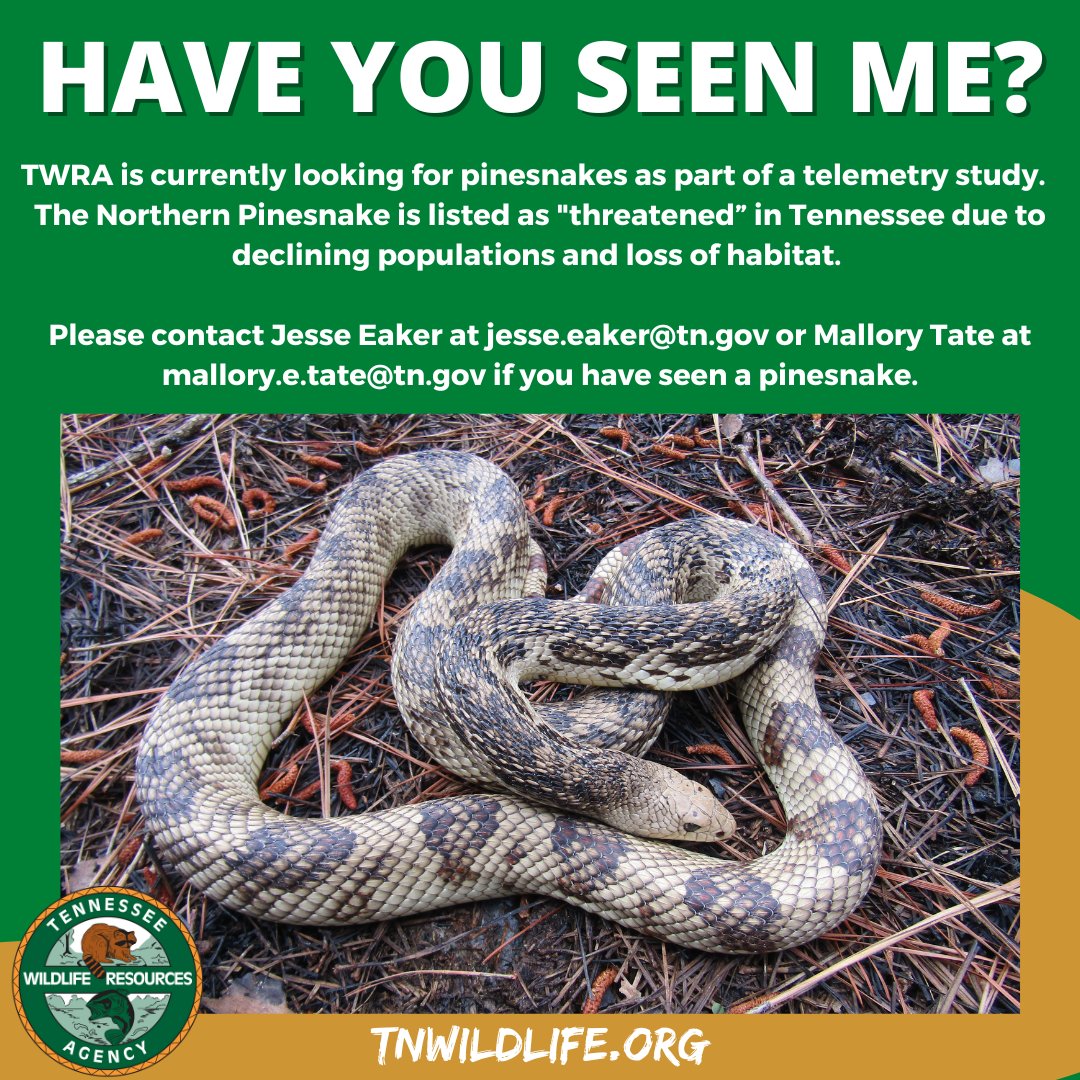
Help TWRA save our pine snakes
NASHVILLE — If you see a vanishing northern pine snake, biologists with the Tennessee Wildlife Resources Agency (TWRA) want to know.
One subspecies of the pine snake, (Pituophis melanoleucus melanoleucus), lives in Tennessee. The snake is considered “threatened” by TWRA due to habitat loss and fragmentation, road mortality, and humans who kill the snakes because they mistake them for timber rattlesnakes.
Brian Flock, biodiversity coordinator for TWRA, said the reports will help the agency find out about the threatened snakes’ habitat and behavior.
“For years we’ve tried to find them. Because of their secretive nature, they’re hard to find,” he said. “We don’t know in Tennessee where they live, how they move around, those kinds of things.” He said they mostly seem to exist in West Tennessee but have been spotted as far east as Knoxville. TWRA, he said, may use the public’s information to add radio tracking devices to the snakes.
KUB and SACE provide a guide to a home efficiency uplift
KNOXVILLE — Are you looking to take control of your utility bills to not only save money but also breathe easier knowing your home is healthier and more comfortable? Join us this Wednesday, May 17, from 6-8 PM for a free workshop to learn about newly available, once-in-a-generation funding, resources, and rebates that everyone can benefit from, regardless of if you own or rent your home, or if you have high or low income, through local and federal funds.
KUB is providing free (yes, free) home energy improvements for income-eligible customers through the Home Uplift program. New or repaired HVAC units, attic and wall insulation, appliances, and electric water heaters are just a few of the home energy upgrades that you may receive. Plus, professional crews are ready and waiting to do the work so you don’t have to.
— Southern Alliance for Clean Energy
Tell Congress: Support health care for miners with black lung
Written by Appalachian VoicesAsk your representatives to support the Black Lung Benefits Improvement Act!
Coal miners in Appalachia are getting black lung disease at record rates, even as the amount of coal being mined is declining. It’s past time to make sure they get the care they need.
Because they can no longer work, coal miners who get the disease are promised certain benefits, like health care and a living stipend. But current laws and processes make it incredibly challenging for miners and their families to access those benefits. And the current benefit levels are not even sufficient to support the miners who are out of work because of their illness.
Pennsylvania Congressman Matt Cartwright and Senator Bob Casey have introduced a bill to make it easier for miners with black lung to access vital healthcare and financial support. Importantly, the bill would also tie benefit levels to inflation. With inflation rising, benefit levels are increasingly inadequate, and this change is needed urgently.
Ask your representatives to support the Black Lung Benefits Improvement Act!
Lunker sturgeon are out there again: report your catch to receive a certificate
Email sturgeon.reports (at) tn.gov an image of your catch-and-release with the date, location and your name to obtain your official certificate! This email address is being protected from spambots. You need JavaScript enabled to view it.
WBIR: Holston River sturgeon surging
The population of lake sturgeon, a survivor since the Cretaceous Era that barely escaped the ravages of modern dams and reservoirs, is on the upswing in the Holston River and other branches and tributaries of the Tennessee River system. The last record of the fish in the valley before restoration efforts began is about 1960, according to WBIR.
Significantly older fish were identified during a recent inventory of sturgeon, giving hope that some fish were closing in on reproductive maturity. The gradual recovery is largely the result of Tennessee Wildlife Resources Agency and Tennessee Valley Authority restoration efforts, WBIR reports.
“It makes our valley richer; that fish is supposed to be here,” one researcher told WBIR about the significance of the so-far successful restoration of native sturgeon habitats.